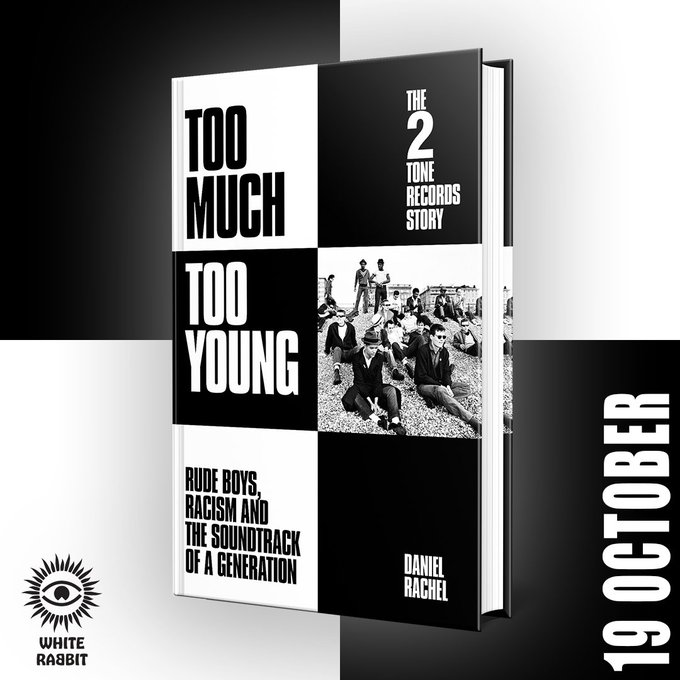

TOO MUCH TOO YOUNG Publication Day!
October 19, 2023

In 1979, 2 Tone exploded into the national conscience as records by The Specials, The Selecter, Madness, The Beat, and The Bodysnatchers burst onto the charts and a youth movement was born.
2 Tone was black and white: a multi-racial force of British and Caribbean island musicians singing about social issues, racism, class and gender struggles. It spoke of injustices in society and took fight against right wing extremism.
The music of 2 Tone was exuberant: white youth learning to dance to the infectious rhythm of ska and reggae; and crossed with a punk attitude to create an original hybrid. The idea of 2 Tone was born in Coventry, masterminded by a middle-class art student raised in the church. Jerry Dammers had a vision of an English Motown. Borrowing £700, the label’s first record featured ‘Gangsters’ by The Specials’ backed by an instrumental track by the, as yet, unformed, Selecter. Within two months the single was at number six in the national charts. Dammers signed Madness, The Beat and The Bodysnatchers as a glut of successive hits propelled 2 Tone onto Top of the Pops and into the hearts and minds of a generation. However, soon infighting amongst the bands and the pressures of running a label caused 2 Tone to bow to an inevitable weight of expectation and recrimination.
Still under the auspices of Jerry Dammers, 2 Tone entered in a new phase. Perhaps not as commercially successful as its 1979-1981 incarnation the label nevertheless continued to thrive for a further four years releasing a string of fresh signings and a stunning end-piece finale in ‘(Free) Nelson Mandela’.
Told in three parts, Too Much Too Young is the definitive story of a label that for a brief, bright burning moment, shaped British culture. The foreword will be written by Pauline Black (The Selecter).
Author, Daniel Rachel, said: As a child, 2 Tone defined the way I saw the world. I was seduced by the off-beat rhythms, the cool looking clothes and most importantly the social and political lyrics. 2 Tone taught me about black and white unity, it gave a voice to the pointlessness of street violence, and it provided an understanding and awareness of the horror of rape and apartheid. That you could dance, look good and be educated by a record was incredible. This music and these bands have printed an indelible mark on my life. To write the story of 2 Tone is one of profound personal pride. But more so, to honour one of the greatest periods in modern popular culture. 2 Tone at its heart was a movement of great songwriters, musicians and songs – We danced and sang, and the music played in a de boomtown!
Publisher, Lee Brackstone said: The music and the aesthetic of 2 Tone set the dial for the prevailing mood of the counterculture in the 1980s, and we’re still feeling the aftershocks of the extraordinary achievements of the label four decades later. Through exhaustive interviews with the major artists and those associated with the label and deep research, award-winning writer Daniel Rachel brings the story of 2 Tone to life: the joy of a uniquely creative moment which arguably did more than any other to challenge racism and class prejudice in Britain, and in the process enlightened
